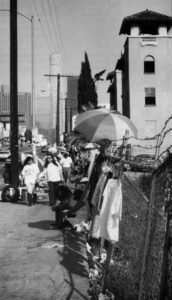
Brooklyn’s Anti-Poverty Workers: Caribbean Immigrants
Family values, religion and community renewal are among the pillars of conservative ideology, and rallying-points of Republican legislators who tend to represent districts that are rural, white and affluent. In Democratic Brooklyn, particularly the mainly black, mainly poor neighborhood called Fort Greene, the Republican Personal



